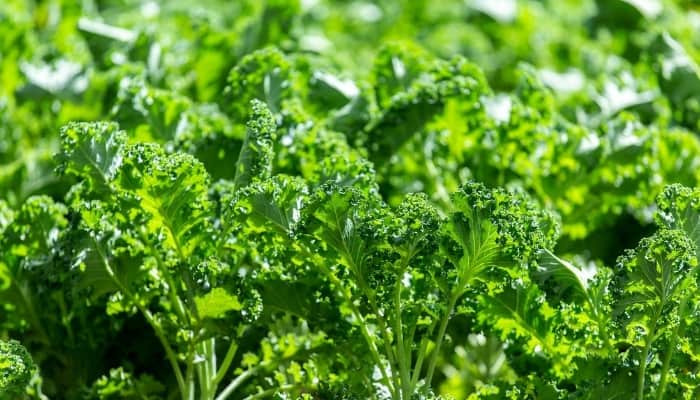What about incorporating kale into hydroponic gardens, considering lettuce and other leafy greens are already popular choices?
Can kale be grown hydroponically? Not only can kale be grown hydroponically, but it is also one of the very best crops for hydroponics. Thanks to kale’s versatile electrical range, it is much easier to grow in hydroponic growing systems than other plants.
In the following, we’ll show you everything you need to know to succeed with growing fresh kale in your hydroponic garden!
What Kale Varieties Are Best for Growing Hydroponically?
There are numerous types of kale from which to choose to grow in your hydroponic system. However, a few varieties are better suited for hydroponics.
Let’s have a look at the best varieties for growing hydroponically:
Curly Kale
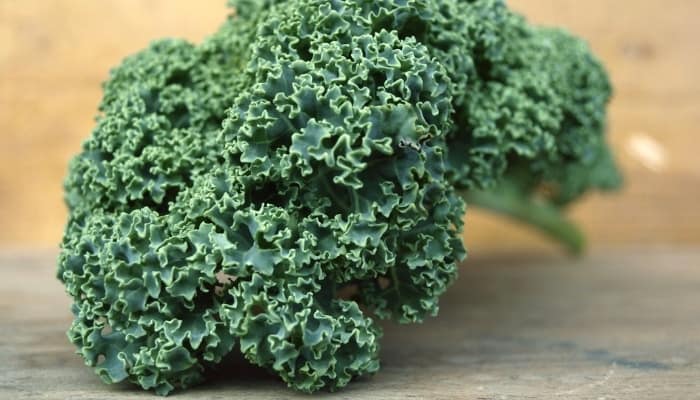
This curly variety of kale is the most popular and is probably what you envision when you think of this leafy green veggie.
Curly kale ranges in color from bright to dark green and develops rather curly leaves. It has a bit of a peppery flavor that may become bitter if grown longer than needed.
Scots Kale
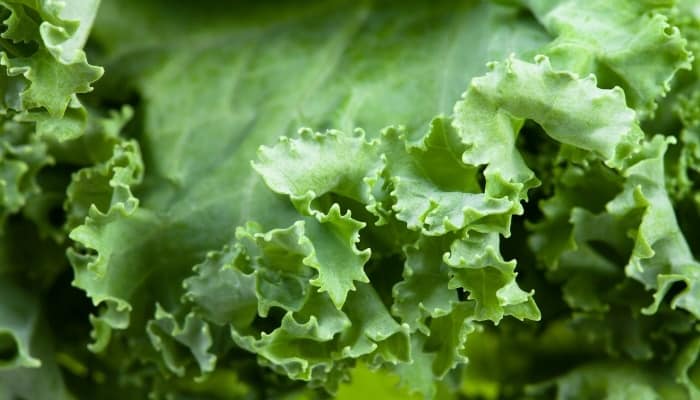
This variety of kale is lower growing than other species, but its leaves grow almost as curly as other types. Technically speaking, it is a Scottish dwarf variety of kale.
The biggest difference between Scots and curly kale is that Scots has a bluish color to its leaves.
Fun fact: The word kale, or kail, means “food” in Scotland.
Red Kale
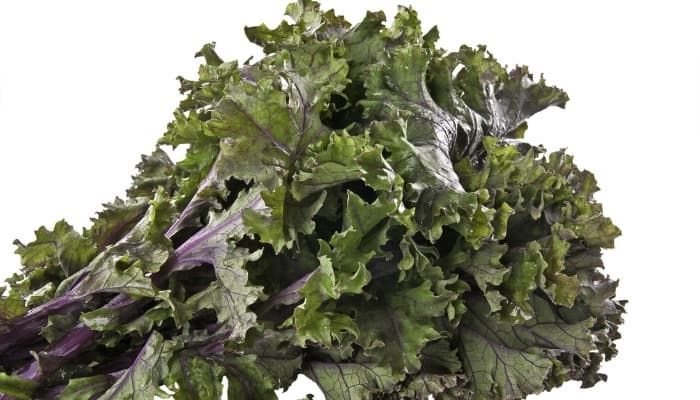
Russian red kale, also known as red kale, is another great species to consider for growing hydroponically. It is often considered the tastiest kale because it has a slight sweetness to it that others lack.
Likewise, its leaves are flatter and softer than other varieties.
All things considered, the three varieties above are the most popular for hydroponics but are far from the only ones you can choose from.
Additional types of kale you may consider are:
- Ornamental
- Lacinato
- Chinese
- Walking Stick
- Siberian
- Winter
- Redbor
- Scarlett
What Hydroponic Systems Are Best for Kale?
There are several types of hydroponic systems that work well for kale and other leafy greens
Deep Water Culture (DWC) is probably the most popular especially for beginners because it doesn’t require much to get started. The plant’s roots are suspended in a nutrient-rich water solution, providing them with constant access to water, nutrients, and oxygen, thanks to an air pump.
Nutrient Film Technique (NFT) is a bit more advanced and takes more time to setup and maintain properly. NFT is a system where a thin film of nutrient solution is pumped from a nutrient reservoir over the roots of the plants, which are held in slightly slanted, shallow channels.
This technique works well for kale because it provides the plant’s roots with an ideal balance of nutrients, water, and oxygen.
You can also explore aeroponic and aquaponic systems for growing kale and other greens.
How Long Does Kale Take To Grow Hydroponically?
Hydroponic kale is ready for harvesting in as little as 3 to 4 weeks if you place them in your hydroponic growing system as transplants.
If you are starting your hydroponic kale from seeds, however, you can expect an extra month or two until it’s ready for harvesting.
Is Hydroponic Kale Cut and Come Again?
Kale is one of those amazing veggies that you can cut when you harvest and it will grow back again. Depending on how careful you are when cutting/harvesting, it may grow back several times.
Some folks go as far as to claim to have the same kale growing in their systems for years at a time.
How Long Does Hydroponic Kale Live?
Hydroponic kale may live for several years if you take proper care of it and harvest it carefully.
If you continue to provide it with proper light, water, nutrients, and oxygen, your hydroponic kale may actually last as much as an entire decade.
Optimal Conditions for Hydroponic Kale
Growing conditions, of course, play a vital role in how well your kale performs. The more ideal the growing environment is, the more the your plants will thrive.
Hydroponic Kale pH, EC & PPM
The standard EC level for hydroponic kale is 0.8 to 1.9, and the PPM is 560 to 850, depending on the species. The preferred pH for kale in hydroponic systems is between 5.5 and 6.5.
Hydroponic Kale Lighting Needs
Kale that is grown in indoor hydroponic systems requires anywhere from 6 to 10 hours of light, preferably from LED grow lights, like this hanging light set with three modes and full-spectrum lighting.
Outside, as much as 6 to 8 hours of direct sunlight is required.
| Type of Light | Recommended Light Duration |
|---|---|
| Natural Sunlight | 6-8 hours per day |
| Fluorescent Lights | 10-12 hours per day |
| LED Grow Lights | 12-14 hours per day |
| High-Intensity Discharge (HID) Lights | 12-14 hours per day |
Best Temperature for Hydroponic Kale
There are two temperatures you need to keep in mind while growing hydroponic kale: the water temperature and the temperature of the room/area the hydroponic system is located in.
The water should remain between 63°F and 72°F, while the air surrounding the system needs to stay around 50°F to 80°F.
Preferable humidity levels are between 45 and 55%.
Nutrient Solution for Hydroponic Kale
The best nutrient solutions for hydroponic kale have a pH of approximately 6.0, and a PPM over 600 but below 900.
Many hydroponic growers opt for nutrient solutions designed specifically for kale and other leafy greens.
A few of the best well-known options include products from:
Germinating Kale Seeds for Hydroponics
Starting from seeds takes a bit longer but is much more cost-efficient than paying for individual plants and hoping they don’t die off while their soil roots are replaced by water roots.
Start your seeds in a seed-starting system, sponges, or rockwool for the best results.
Seeds typically sprout within a week or so. Once they are poking their heads up, wait an additional 3 days to a week before transplanting them into your growing system.
How To Grow Kale in Hydroponics
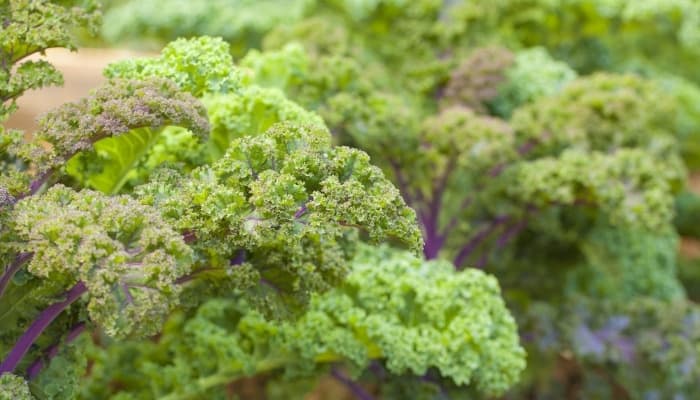
Growing kale hydroponically is one of the easiest crops to master. Here are the steps you need to follow:
- Germinate seeds outside of your hydroponic system in starter cubes or plugs.
- Add proper nutrients for kale to your water reservoir.
- Set the pH of your water to roughly 6.0 and the EC to approximately 1.0.
- Regulate the water temperature to roughly 65°F or 70°F .
- Transplant seedlings/plants into grow sites.
- Maintain a temperature of between 50°F and 80°F around your system.
- Set your lights to 6 to 10 hours on and 18 to 14 hours off.
- Keep an eye on your system and all of its components.
- Change the water and nutrients in your system every 14 to 21 days.
- Make repairs to broken parts of your system as needed.
When To Harvest Hydroponic Kale
Depending on what size you want your kale to be when you harvest, the best time to cut/pick it varies. For baby kale, 3 to 4 weeks is all you need. Fully mature kale requires between 3 and 4 months.
Hydroponic Kale Yield
Each hydroponic kale plant may yield approximately half a pound. That said, depending on your harvesting technique, you can get several pounds per plant in the long run.
Some kale lives for up to 10 years in hydroponic systems, yielding 20 pounds or more per plant.
What Grows Well With Kale?
There are numerous species that make great companion plants for growing with kale. A few of the most practical include:
Common Problems When Growing Kale Hydroponically
Now that we’ve discussed nearly everything there is to know about growing kale hydroponically, there’s just one thing left to cover: the common problems you may encounter when growing hydroponic kale.
Kale is such an easy/simple plant to grow in a hydroponic system that there aren’t too many serious issues associated with it.
The most common issues with growing kale hydroponically are:
Power Outages
Sudden power outages are the hydroponic gardeners’ worst enemy. When growing kale hydroponically, watch out for this bothersome problem, and avoid it at all costs.
Solution
Make sure you’re not overloading your power source or getting anything wet (that may cause a shortage). Also, keep your electricity bill paid on time!
Wrong pH, EC, or PPM
A common problem (with a simple fix), is having the wrong pH, EC, or PPM in your hydroponic reservoir’s water. It is a sure way to send your kale into shock or even kill them eventually.
Solution
Test your system’s water on a daily basis, and adjust the pH, PPM, and EC levels as needed.
Not Changing Water
Speaking of checking on your hydroponic water daily, you must also change it out completely once every 2 to 3 weeks.
When you change your water, you need to add in new nutrients and adjust EC, pH, and PPM as well.
Solution
Set a schedule for changing your reservoir’s water, and stick to it. Set a reminder on your phone if need be!
Transplanting Too Soon
Another common problem with growing hydroponic kale is transplanting the seedlings/plants into your system’s grow sites too soon(or improperly “planting” them).
The roots must be able to reach the water, and they must be established enough to do so.
Solution
Allow your kale plants to grow two sets of true leaves in addition to their first smooth ones (the sugar leaves) before you transplant them into your hydroponic growing system.
Wrapping It Up
Growing hydroponic kale not only ensures that you have plenty of fresh and healthy greens to eat, but it is profitable as well.
It’s also one of the least complicated and hardest crops to mess up when it comes to hydroponics in general.
Whether farming for money or the dinner table, growing kale hydroponically is a win-win situation.

